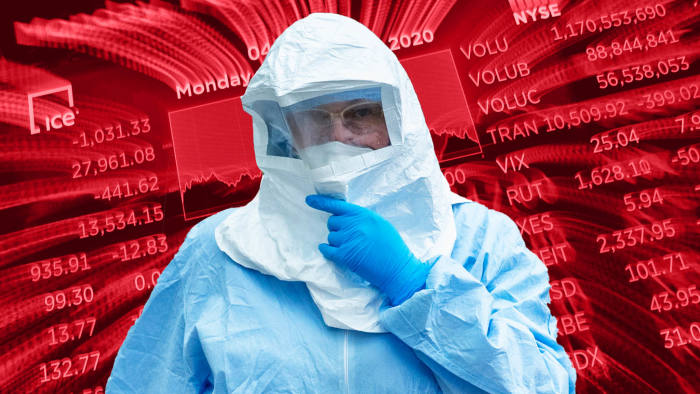ft.com/content/e0ca01ee-57cb-11ea-abe5-8e03987b7b20
Until this week, the market reaction to the virus had been mild — after a dip in late January, US and global equities rallied to new highs. This complacency was based on a number of flawed assumptions. First, that the epidemic would be limited mostly to China, rather than becoming a global pandemic. Second, that it would be contained and peak before the end of the first quarter, thus limiting the economic damage to China and the global economy. Third, that the growth path would be V-shaped, with a strong rebound in the second quarter and beyond. Fourth, that policymakers — both monetary and fiscal — would take strong early actions to support economies and markets, if things were to weaken significantly.
….
Assuming that China will rebound at this rate in the final three quarters of the year — which would imply growth in 2020 of 4 per cent — is heroically optimistic. It is more likely that a V-shape shows growth returning to a pre-virus annualised level of 6 per cent from the second quarter onwards. In this case, China’s calendar-year growth would be 2.5 per cent. Compare both the rosy and more realistic scenario with current market expectations, which have revised growth estimates for China from 6 per cent to 5.5 per cent, and you can see how investors are still delusional. An annual growth rate in the range of 2.5-4 per cent would also be a major shock to global growth and to other economies.
“”The expectation that policymakers will rapidly come to the rescue is also misguided. Fiscal policy will react very slowly, or not at all, given political and other constraints. Central banks are running out of bullets: how much more negative can the European Central Bank, Bank of Japan and others go on interest rates?
The US Federal Reserve has only 1.5 percentage points of headroom left. It will probably react in the second quarter by cutting rates, leading to short-term market relief. But this coronavirus outbreak is mostly a negative supply shock that reduces growth and increases costs and inflation, with some side-effects for aggregate demand. Monetary policy cannot resolve this.
…
The coronavirus outbreak is likely to be only one of many negative shocks that will hit the global economy this year. Others include the risk of a war between US and Iran causing a spike in oil prices; political chaos in the US as foreign rivals interfere in the upcoming election; and an escalation in tensions between US and China. Take all of this together, and the risk of a global recession is rising.””
![]()


